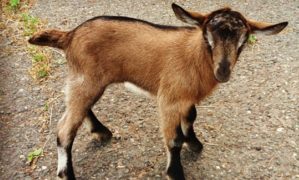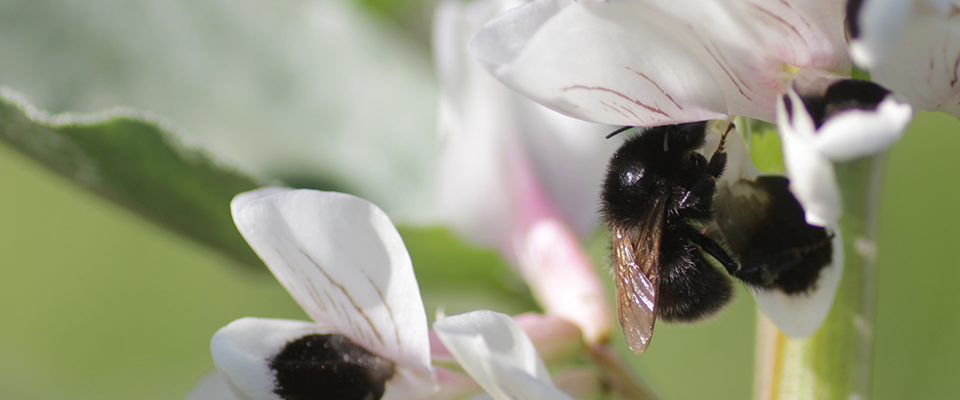
Who was the person who said ‘If you like the view, eat it’?” says Dan Barber, chef-owner of New York City’s Blue Hill and its Westchester restaurant and education center Blue Hill at Stone Barns. “They must have been referring to goats. Goats eat any kind of grass—especially brush and thorny bushes that encroach on grass fields, preserving open space like no other animal. And then there’s the meat. Which means with every delicious bite you get great flavor. What is tastier than that?”
What, indeed? Goat is the healthiest of red meats. Since goats live on pasture, their meat has low saturated fat content; at the same time, the omega 3’s and other fatty acids that they ingest actually lower cholesterol. In addition to health benefits, goats thrive on land unsuitable for other species and are particularly suited to maintaining vacant and unused farmland where they feast on bush honeysuckle, groundcover weeds and tough vines.
So where is the booming U.S. goat industry that Dan Barber’s description might lead you to expect? For the most part, it’s not what it could be. At least not yet. There’s a proven unmet demand (we import about half of our goat meat), but the infrastructure doesn’t quite exist to get American goats to market. And the reasons why offer a fascinating view into how food markets work—and sometimes don’t.
When it comes to goat meat, Americans are unusual: unlike much of the rest of the world, many of us eat no goat meat at all. But we do eat goat cheese, which over the past decade has been one of the country’s fastest-growing dairy categories. There are roughly a million dairy goats in the United States, producing about 24,000 tons of goat milk and 600 tons of cheese. (We also import a similar amount of goat cheese from abroad.)
So what happens to their brothers—the 40,000 to 50,000 male dairy goats born each year who don’t produce milk?
They’re a hard sell for farmers, says Lynn Fleming, founder of upstate New York’s Lynnhaven Farm. She has no problem selling her goat cheeses at farmers’ markets and high-end restaurants in New York City like Danny Meyer’s Eleven Madison Park and Jean-Georges Vongerichten’s ABC Kitchen. But unlike in the cattle industry where male dairy calves can be used for veal or ground meat, there is no obvious channel for goat meat. Producers must decide whether or not to raise them for meat, an expensive proposition for a business with, at best, a small profit margin. If they can’t be used for meat, they’re sometimes wethered and used as show animals.
That tiny margin, by the way, is not because goat fetches a low retail price–quite the opposite. It’s because goat meat is so expensive and difficult to produce. In other words, demand isn’t the problem.
“Goat will never be a cheap product,” says Anita Dahnke, executive director of the American Goat Federation. “You cannot feedlot goats like you can cattle.” That’s because they’re extremely susceptible to parasites, which are ingested from the soil and passed out through their manure. Overcrowding makes the problem exponentially worse.
Even managing the wormload of healthy animals takes a lot of skill and patience, says Suzanne Gasparotto, owner and educator at Onion Creek Ranch in Lohn, Texas. Because of the industry’s low profile, there are few if any commercial medicines available when goats get sick. In order to keep illness-prone herds healthy, you need a lot of land—the most experienced farmer might have trouble supporting more than a few animals per acre. And fewer animals per acre means fewer dollars.
At the same time, Dahnke says, few slaughter facilities are willing to process and package goats. All in all, it adds up to a stark financial picture—the USDA estimates that 91% of goat producers make less than a fourth of their income from farming.
The United States is 750,000 head deficient in meeting current demand for goat meat. Considering average herd size, that’s about 25,000 herds too few.
Supply-side challenges have been daunting enough to keep the market small. And that means, paradoxically, we don’t even produce enough goat meat to feed the Americans—primarily those of non-European ancestry—who do routinely eat it. “In order to meet the demand for goat meat in the United States today,” says Dahnke, “52 percent of the goat meat consumed is imported, primarily from Australia and New Zealand.”
These are interesting times in the goat world, as researchers and advocates look for ways to raise the animal’s profile in the marketplace. To call attention to the plight of male dairy goats, the online butcher Heritage Foods launched a “No Goat Left Behind” campaign with an annual Goatober, linking restaurants and butchers with dairy goat producers. Participating restaurants featured special goat meat dishes such as braised goat ragu, goat filled ravioli, goat buns, and goat curry.
In Georgia, researchers from Fort Valley State University worked with entrepreneurs David and Frances Martin to launch Gotcha Goat, a company that aims to help Georgia’s meat goat producers and processors fill rising demand for the meat. Anand Mohan, meat scientist with the University of Georgia College of Agriculture and Environmental Sciences, says: “Our goal is to make Americans aware of goat meat as a delicious option for dinner.”
Expanding on this, David Martin says: “Most Americans’ first experience with goat meat has likely been a curried goat dish served at an Indian or Jamaican restaurant. We want to expand peoples’ ideas about goats and get them to try it in other formats like a burger or ground in spaghetti, lasagna, tacos or goat jerk or sausage.”
Until recently, most goats consumed domestically were dairy goats. But as the demand for goat meat grows, farmers are raising goats specifically for their meat, breeding for a heavier muscle mass than typical dairy breeds. The most popular are Spanish meat goats, which are not purebred but a cross between native Texas or Spanish goats and Nubians, dairy goats that are also good meat goats. These so-called native goats were originally brought into the southern United States by Spanish invaders, hence their name. In 1993, the Boer goat, a South African breed was introduced into the United States. It matures faster than dairy goats and therefore is more economical to produce and has haunches that contain almost twice as much meat as those of the Spanish goat.
Will new breeds help close the goat gap? Maybe. But one thing’s certain: if producers can solve the supply-side challenges, the demand is there. Though it’s still a fractured market. Besides, unlike other livestock producers, goat farmers don’t have to worry about competition from industrial agriculture. “With the average herd size only thirty head, goats lend themselves very well to small-scale farm operations,” Dahnke says. Big Goat? Not likely.












